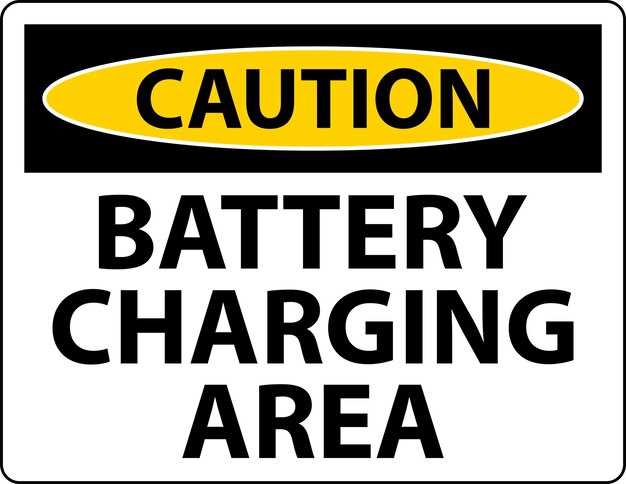
A motorcycle is not just a mode of transportation; it is a passion for many riders. However, like any machinery, it requires regular maintenance to ensure optimal performance. One of the most critical components of your motorcycle is its battery. Understanding the signs that indicate a need for replacement can save you from being stranded on the road.
Common symptoms of a failing motorcycle battery include difficulty starting the engine, dimming headlights, and the presence of corrosion on the terminals. If you notice any of these issues, it may be time to consider a battery replacement. Additionally, factors such as battery age and riding frequency play vital roles in battery health and longevity.
In this article, we will explore the most prominent signs that suggest your motorcycle battery requires replacement and provide you with helpful tips to ensure a smooth transition during the replacement process. Whether you’re a seasoned rider or a novice, understanding these aspects will enhance your riding experience and keep your motorcycle in top condition.
Identifying Clear Signs Your Motorcycle Battery Needs Replacement

Understanding the signs that indicate your motorcycle battery requires replacement is essential for maintaining optimal performance. One of the first signs is difficulties in starting the engine. If you notice that the motorcycle is slow to crank or makes a clicking sound when you attempt to start it, this is a clear indication that the battery might be weakened and potentially needs replacement.
Another sign to observe is the age of the battery. Motorcycle batteries typically have a lifespan of 3 to 5 years. If your battery is approaching or exceeding this age, it’s wise to consider replacing it even if it hasn’t shown obvious symptoms yet.
Additionally, keep an eye on the electrical systems of your motorcycle. If you experience issues such as dimming lights or problems with the horn and other electrical accessories, it might be a result of a failing battery. These irregularities can signify that the battery is no longer able to hold a charge effectively.
Physical signs also provide important clues. Inspecting the battery case for any cracks, leaks, or bulging can indicate that the battery is damaged and should be replaced immediately. Corrosion around the terminals is another red flag. If you see a white, ashy substance on the terminals, it’s a sign of chemical leakage which suggests the battery is on its last legs.
Lastly, if you find that your battery requires frequent jump-starts or if you often have to recharge it, these are clear signs that it’s time for a replacement. Relying on temporary solutions to keep your motorcycle running can lead to more significant problems down the line, making it essential to address battery issues promptly.
Steps to Safely Remove and Replace Your Motorcycle Battery
Removing and replacing your motorcycle battery is a straightforward process, but it requires attention to detail to ensure safety and functionality. Follow these steps for a smooth battery replacement.
1. Prepare Your Workspace: Choose a well-ventilated area to work on your motorcycle. Gather necessary tools including a wrench, a screwdriver, and protective gloves. Make sure your motorcycle is turned off, and the key is removed from the ignition.
2. Disconnect the Negative Terminal: Locate the battery beneath the seat or in the designated compartment. Start by disconnecting the negative (-) terminal first, which is typically marked with a black cable. Use a wrench to loosen the nut and carefully remove the cable from the terminal to prevent short-circuiting.
3. Disconnect the Positive Terminal: Next, disconnect the positive (+) terminal, usually marked with a red cable. Again, use your wrench to loosen the nut and remove the cable. Always handle the positive terminal with care to avoid any accidental contact with metal parts.
4. Remove the Battery: Once both terminals are disconnected, carefully lift the battery out of its compartment. Be cautious, as motorcycle batteries can be heavy and may contain corrosive materials.
5. Clean the Battery Terminals: Before installing the new battery, clean the terminal connections with a mixture of baking soda and water to neutralize any corrosion. Rinse and dry thoroughly for optimal contact.
6. Install the New Battery: Place the new battery into the compartment, ensuring it is oriented correctly. Start by connecting the positive (+) terminal first. Slide the cable over the terminal and secure it with the nut, making sure it is tight enough to avoid any movement.
7. Connect the Negative Terminal: Following the positive connection, attach the negative (-) terminal. Tighten securely using the wrench. Ensure that there is no exposed metal from the terminals.
8. Test the Installation: Turn on your motorcycle’s ignition to check that everything is functioning properly. If the motorcycle starts without issue, the battery has been installed correctly.
9. Dispose of the Old Battery Properly: Do not throw the old battery in the trash. Instead, take it to a recycling facility or a shop that accepts used batteries to ensure safe disposal.
By following these steps, you can safely remove and replace your motorcycle battery, ensuring your bike remains in peak performance condition.
Maintaining Your New Motorcycle Battery for Longevity

To ensure the longevity of your new motorcycle battery, regular maintenance is crucial. Start by checking the battery’s terminals for corrosion. Clean any buildup using a mixture of baking soda and water to prevent electrical resistance and improve performance.
Keep your battery charged, especially during off-seasons. A fully charged battery is less likely to sulfate, which can reduce its lifespan. Investing in a battery maintainer or trickle charger can help keep your battery ready for use.
Inspect the electrolyte levels if your battery is not maintenance-free. Ensure that the plates are covered, and top up with distilled water when necessary. Avoid overfilling, as it may lead to electrolyte overflow and damage the terminals.
Store your motorcycle in a cool, dry place to protect the battery from extreme temperatures, which can cause deterioration. If you know you won’t use your motorcycle for an extended period, disconnect the battery and store it in a climate-controlled environment.
Regularly perform visual inspections for cracks or signs of wear on the battery casing. Replace your battery immediately if you notice any defects, as these can lead to leaks and further complications.
Lastly, ensure your motorcycle’s charging system is functioning properly. A faulty regulator can overcharge or undercharge the battery, leading to premature failure. Regular maintenance checks will help avoid unexpected replacement and keep your motorcycle running smoothly.
